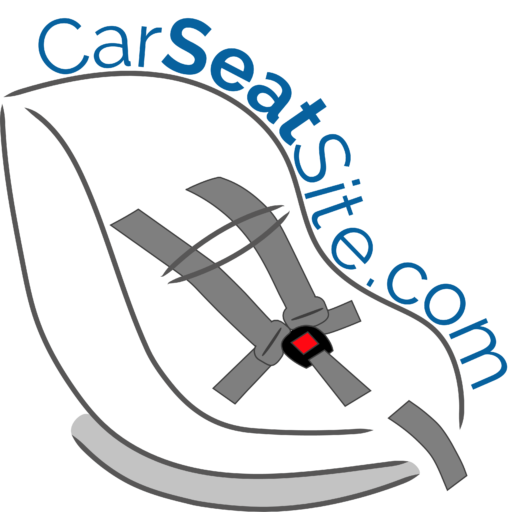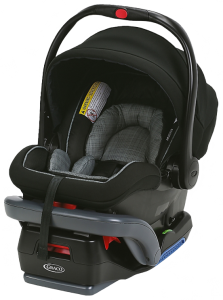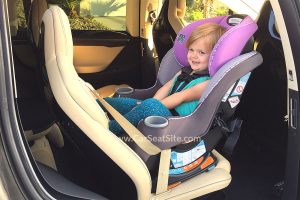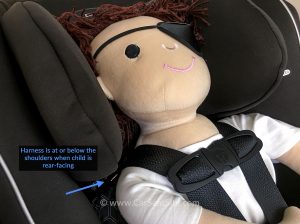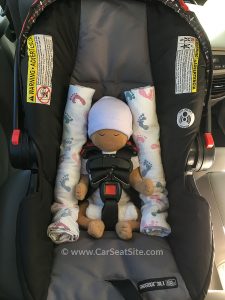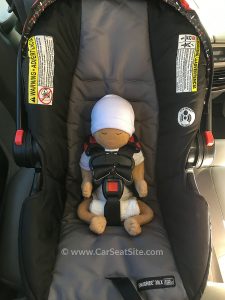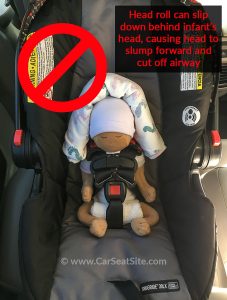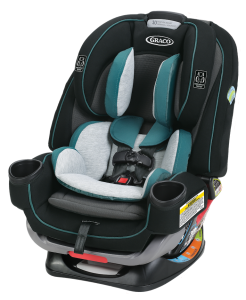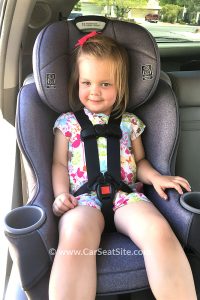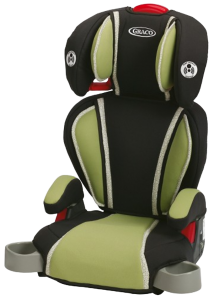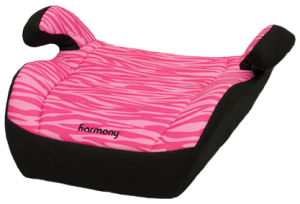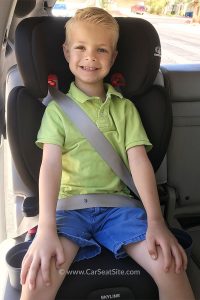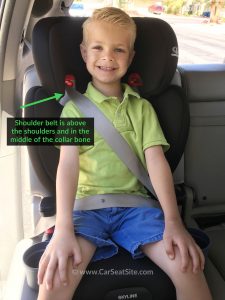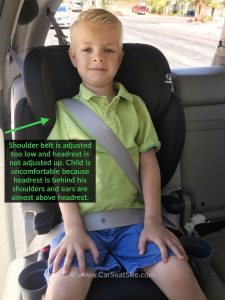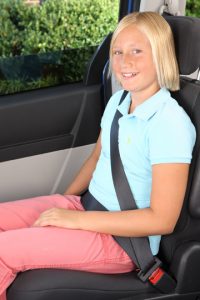 Using a harness incorrectly is one of the most common mistakes parents and caregivers make when using a carseat. While generalizations can be made regarding harness use, read your owner’s manual to determine proper harness use for your seat. Pay careful attention to what the manufacturer of your seat says is the maximum weight limit for the harness as it is used; for example, what the rear-facing weight limit or the forward-facing weight limit is. The pictures seen here are meant to be used as a supplement to your manual.
Using a harness incorrectly is one of the most common mistakes parents and caregivers make when using a carseat. While generalizations can be made regarding harness use, read your owner’s manual to determine proper harness use for your seat. Pay careful attention to what the manufacturer of your seat says is the maximum weight limit for the harness as it is used; for example, what the rear-facing weight limit or the forward-facing weight limit is. The pictures seen here are meant to be used as a supplement to your manual.
What is a snug harness? Per federal requirements, current instruction manuals define a snug harness like this: “A snug strap should not allow any slack. It lies in a relatively straight line without sagging. It does not press on the child’s flesh or push the child’s body into an unnatural position.”
The vast majority of parents and caregivers still leave the harness too loose, even given these guidelines. Think about snugness as “snug as a hug from a friend.” It is not cruel or uncomfortable for your child to have a snug harness; it can be lifesaving. Find your carseat type below and use these guidelines in conjunction with the carseat manual to properly secure your child.
Rear-Facing
Use the harness slots that are at or below the child’s shoulders. If there are several slot positions below the child’s shoulders, use the slots closest to the shoulders.
Why use the slots below the shoulders?
- The most common type of crash is a frontal crash (53.5%)
- A rear-facing carseat will move down and forward because physics dictates that everything moves toward the point of impact (remember Newton’s 1st Law from science class?)
- The vehicle seat will compress and the seat belt or LATCH belt will stretch, causing the child to “ramp up” the carseat toward the front of the vehicle
- Having the harness come from below the shoulders will hold the child down in the seat making it less likely he will slide up the carseat and less likely his head will strike the vehicle interior—one of the main causes of injury for rear-facing children
- There will always be some degree of belt stretch, both vehicle belt/LATCH belt AND harness—it is part of energy management—so that is why it is important to make sure both are snug in the beginning
- Don’t forget that since the child moved up in the carseat, he will slide back down during rebound. The less movement up the seat, the less movement there will be back down and the less potential there is for injury—that makes sense.
Harness height adjustment is not made often; only just as torso growth is seen. The harness should not be moved to the next slot position higher until the child’s shoulders are comfortably above that position. For more information on how to change the harness height on a carseat with slots (this is known as a re-thread harness), see the following video. The concept is the same for a convertible or combination carseat.
Harness tightness adjustment is a daily affair, however. The harness tightness should be checked before each ride and the chest clip should be placed at armpit level. The chest clip keeps the harness on the shoulders and should be over the bones of the chest. In a crash, the clip will slide down or break apart. Depending on the carseat, some parents prefer to leave the harness tightness and not adjust the harness often. How snug should the harness be?
Try to take a pinch above the chest clip. If you can pinch the webbing above the chest clip, the harness is too loose; adjust it tighter so you cannot take a pinch. This is called the “Pinch Test.”
Alternatively, before adjusting the harness, you can take a pinch in the harness above the chest clip, then pull the harness snug until the pinch disappears.
There will always be some slack over the belly between the buckles and the chest clip. This is normal. Some kids even slide their arms in this space although they should be discouraged from doing so since they could be injured in a crash. As long as the slack in the harness has been removed and it passes the Pinch Test, you and your child are good to go!
Newborns and small babies: If you feel like your infant is not being supported in his carseat by the inserts supplied by the manufacturer (if any), you may add tightly rolled receiving blankets along the sides of his body after he has been properly harnessed, if the carseat instruction manual or manufacturer’s FAQ does not prohibit it. If there is a large gap between his body and the crotch strap, you may also add a tightly rolled washcloth to keep him from sliding down if the manual doesn’t prohibit it.
Adding any extra padding between the infant and the carseat or harness can affect the safety of the seat. Each manufacturer tests the inserts that comes with each seat to make sure compression and friction will not factor into a bad outcome for your child in a crash. Placing the rolled receiving blankets outside of the harness and alongside the child’s body gives positioning help without interfering with the harness. A rolled washcloth may be placed to take up space at the crotch on rear-facing carseats only because it is so important to keep small infants in proper position to keep their airways open. If they slide down, they are likely to go chin-to-chest and have airway issues.
Forward-Facing
Use the harness slots that are at or above the child’s shoulders. If there are several slots above the child’s shoulders, use the slots closest to the shoulders.
Why?
- The most common type of crash is a frontal crash (53.5%)
- A forward-facing carseat will move down and forward because physics dictates that everything moves toward the point of impact (remember Newton’s 1st Law from science class?)
- The vehicle seat will compress and the seat belt or LATCH belt will stretch, causing the child to fling forward against the harness
- Having the harness come from above the shoulders will hold the child back against the carseat
- If the harness comes from below the shoulders for a forward-facing child, their shoulders will roll forward and there may be spinal compression
- Head and leg injuries are common in forward-facing children, so it is important to properly harness this age group
- There will always be some degree of belt stretch, both vehicle belt/LATCH belt AND harness—it is part of energy management—so that is why it is important to make sure both are snug in the beginning
Harness height adjustment is not made often; only just as torso growth is seen. The harness should not be moved to the next slot position higher until the child’s shoulders are above the current slot positions.
Harness tightness adjustment is a daily affair, however. The harness tightness should be checked before each ride and the chest clip should be placed at armpit level. The chest clip keeps the harness on the shoulders and should be over the bones of the chest. In a crash, the clip will slide down or break apart. Depending on the carseat, some parents prefer to leave the harness tightness and not adjust the harness often. How snug should the harness be?
Try to take a pinch above the chest clip. If you can pinch the webbing above the chest clip, the harness is too loose; adjust it tighter so you cannot take a pinch. This is called the “Pinch Test.”
Alternatively, before adjusting the harness, you can take a pinch in the harness above the chest clip, then pull the harness snug until the pinch disappears.
There will always be some slack over the belly between the buckles and the chest clip. This is normal. Some kids even slide their arms in this space although they should be discouraged from doing so since they could be injured in a crash. As long as the slack in the harness has been removed and it passes the Pinch Test, you and your child are good to go!
Belt-Positioning Booster
Belt-positioning boosters follow similar guidelines to forward-facing carseats in that the shoulder belt guide should be above the shoulder. Many caregivers new to boosters tend to put the shoulder belt guide too low on the child, thinking it is like a harness slot and should be right at the shoulder. There is a little more play allowed with a booster shoulder belt guide: the height of the belt guide determines where the shoulder belt will lay on the child’s shoulder. The higher the belt guide, the closer to the child’s neck the seat belt will lay. You also have to keep the size of the headwings in mind so that the child’s head is protected. You want the seat belt to lay squarely in the middle of the child’s shoulder with the majority of their head in the headwings.
Some booster manuals may also specify a distance from which the shoulder belt guide must be to the child’s shoulder.
Highback boosters adjust in height by squeezing or lifting a handle on the back of the headwings or the backrest. Adjust the headwings to fit your child as specified above and according to your booster manual. If your highback booster cannot be adjusted any higher and your child is too tall for the back, check your manual to see if the back can be removed. If so, remove the back and use it as a backless booster. If you cannot use your highback booster as a backless booster, purchase a taller highback booster or a backless booster.
Lap/shoulder belts should always move freely through shoulder belt guides if your child leans forward and should remain snug when he settles back. Find a different booster with shoulder belt guides in a different position if the shoulder belt does not glide freely through the belt guide. The lap belt should be low on the hips, touching the thighs.
Seat Belt
Seat belts are designed to fit across the bones of the body. The shoulder belt should lay in the middle of the collar bone while the lap belt should lay low across the hips, touching the thighs. Many vehicles have shoulder belt height adjusters for a custom fit: the higher the shoulder belt adjuster is located, the closer to the neck the shoulder belt will lay.
Serious injuries can occur from an ill-fitting seat belt or a seat belt worn improperly. Seat Belt Syndrome is a pattern of injuries that include serious abdominal injuries, spinal cord injuries, and head injuries that can occur when a person jackknifes around a seat belt; it most commonly occurs when a shoulder belt is worn off the shoulder or behind the back.
Children are at risk of serious injury if they move to a seat belt before they are big enough to fit in one; they can suffer internal injuries or even be thrown from the vehicle. What is the criteria for fitting in a seat belt? They should pass the 5-Step Test:
- The child can sit all the way back against the vehicle seat comfortably.
- The child’s knees bend comfortably at the edge of the vehicle seat.
- The shoulder belt crosses the child’s collar bone mid-way between the neck and the shoulder.
- The lap belt sits low over the hips, touching the thighs.
- The child’s feet touch the floor and they can stay seated this way the entire ride.
